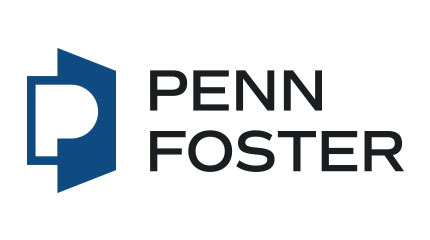Open the Door to a New Career with Penn Foster
NYICD is no longer accepting new students but you can still take the next steps toward a new career or further your education with our affordable, online sister school, Penn Foster. With over 130 years of experience in distance education and a broad range of accredited career, college, and certificate programs in in-demand fields, you can open the door to a new job, build industry-recognized skills, and take the next step toward the life you want – still completely online, at your own pace.
In-Demand Healthcare Career Training with Penn Foster
Take the first steps toward an in-demand, rewarding career in healthcare with Penn Foster. With accredited online programs in clinical and administrative roles, you can build the skills you need on your schedule, online.
Personalized Support from Experts in Your Field of Study
Pharmacy Technician Online Training

Did you know that nearly 1 out of 4 new jobs were created in the healthcare sector last year?
Once you complete our online Pharmacy Technician Course, one of those careers can be yours. You will graduate ready to enter the workforce.
Course Description
Our Pharmacy Technician Certification program was developed by industry professionals who know what it takes to get hired. After graduating our course, you’ll be fully prepared to work in a fast-paced pharmacy environment. Not only that, but our course prepares you to take one of several industry certification exams, which will ensure that you stand out and get hired.
Online Pharmacy Tech Course Outline
Unit 1: Introduction to Pharmacy
1.1 History of PharmacyStudy the origins of pharmacy and the development of the pharmacy profession. You will look at the roles and duties of pharmacists and pharmacy technicians, and explore the history of legislation that affects the pharmacy practice.
Knowing medical and pharmaceutical terminology clearly identifies you as a member of the pharmaceutical profession. Learn all you can about the medical and pharmaceutical language related to your career, and gain the ability to relate to your professional peers, the confidence of understanding terms used on your job, and the power to advance to your fullest potential.
When working in a pharmacy, you will be working as part of a team. Understand the importance of teamwork, interpersonal skills, relationship building in the workplace. Investigate the different types of pharmacy teams, methods of communication, and conflict resolution tools that will allow you to handle yourself professionally in a pharmacy environment.
Understand the systems of measurement used to manufacture and dispense medications. Begin to understand the process of calculating and converting household and metric systems. Then, look at other standard methods of measurement in the pharmacy, including temperature, time, and the different numerical systems.
Use pharmacy lab simulation software to perform the everyday tasks encountered by the pharmacy technician, including collecting, organizing, and record demographic and clinical information for the patient care process, and recording third-party insurance information for the billing process.
Unit 2: Pharmacy Basics
2.1 Pharmacy CalculationsLearn how to calculate values and perform conversions from fractions, decimals, and percentages. Take a look at ratios and proportions as they apply to the pharmacy technician, and complete real-world pharmacy calculations, such as household to metric measurement conversions for prescriptions.
Discover the technical names, proprietary names, nonproprietary names, official names, and unofficial names used to identify drug substances. Examine the differences between trade and generic drug names, and learn the drug name creation process.
Study the different types of dosage forms, such as liquids, tablets, ointments, suppositories, and inhalers. Then, review the different ways that drugs are administered to the patient, and why different drugs, disease states, and patient states require different routes of administration.
Practice the technician’s primary role in the pharmacy, which includes accepting and assessing prescriptions, adding and processing prescriptions through the pharmacy software, providing the medicines to the patient, and receiving payment for those orders.
Unit 3: Understanding Pharmacology
3.1 Pharmacologic ClassesIt is vitally important that you familiarize yourself with drug classification systems to succeed as a pharmacy technician. Explore the methods used to identify and categorize medications that have been developed to improve the efficiency of the medical practice.
Some of the most commonly prescribed medications are antibiotics, antifungals, and antiviral drugs. Familiarize yourself with these drug types, develop methods for recognizing the names of the drugs in various classes and categories, and understand the approach and mechanism of actions of these agents.
Focus on the central nervous system and survey the anesthetics, narcotic pain relievers muscle relaxants, nonnarcotic analgesics, and psychiatric drugs used to treat the disease states that affect this region, and learn when and why to use drugs to treat various disorders.
Respiratory drugs are used to treat or prevent a variety of diseases such as bronchoconstriction, inflammation, and loss of lung elasticity. Gastrointestinal (GI) drugs are used to treat ulcers, GI mobility, and GI disease. Study the variety of conditions associated with the respiratory system and the gastrointestinal (GI) tract and the drugs used to treat disorders related to these body systems.
As with the other body systems, cardiovascular, renal, and urinary systems can also suffer disease, and particular drugs are designed to treat both the symptoms and the underlying causes. Examine the difference between the various drugs used for cardiovascular, renal, and urinary diseases.
Many classes of drugs are used for hormonal therapy. Topical medication is applied to the surface of the skin, and comes in the form of creams, ointments, gels, and lotions. Discuss the classes of medication that may be used to treat a range of conditions, but have one of these common attributes.
Cancer treatment is a complex disease. Explore the many pharmaceutical interventions for this cancer, the drugs in each class, why they are used, and the advantages and risk involved in using chemotherapeutic agents.
Familiarize yourself with psychiatric drugs and drugs for the central nervous system, including the leading medications used to treat various forms of mental illness, activate the central nervous system, and treat disorders such as dementia, epilepsy, and attention deficit disorder (ADD).
Unit 4: Pharmacy Applications and Processes
4.1 Community Pharmacy OperationsStudy the types of community pharmacies, the roles of the pharmacist, pharmacy technician, and pharmacy clerk, the differences between retail and institutional practice settings, the types of automated dispensing systems used in community pharmacies today, and the differences between community and closed-door pharmacies.
Outline the requirements that the pharmacy technician must follow when interpreting, typing, and filling a prescription, including the steps required for examination of an order for a controlled substance to confirm it’s legality.
Review several different types of health insurance plans, including private insurance plans, group insurance plans, and government-sponsored healthcare plans. Explore the impact of insurance in the pharmacy as it relates to billing for prescription medications.
Learn how to return drug products to the manufacturer in the case of a drug recall, how to handle expired drugs and nearly expired, and how to order and manage stocks of controlled substances. Then, apply these accepted procedures in inventory control of medications, equipment, and devices.
Examine institutional pharmacies, which in addition to hospitals, may also serve long-term care facilities, skilled nursing facilities, and hospice care facilities, including the role of the hospital pharmacist and the pharmacy technician with regards to medication reconciliation and pharmacy informatics.
Unit 5: Analyzing and Evaluating the Pharmacy Practice
5.1 Infection ControlObserve universal precautions that are critical in preventing the spread of transmissible diseases, recognize common pathogens encountered in the pharmacy, and investigate proper handwashing techniques and other procedure to avoid the spread of infectious diseases.
Investigate the preparation of admixtures and compounds to support patient care, study the requirements for protecting patients and healthcare workers from infection during this process, examine the techniques used in preparing non-sterile extemporaneous products and supplies, and break down of the procedures used in preparing sterile IV products.
Take an in-depth look into the actions and events that have led to the current state of the pharmacy profession, including the laws, professional organizations, and government agencies that regulate pharmacy practices and professional standards.
Look beyond your education and towards your career in the pharmaceutical industry. Identify different continuing education options as they apply to the pharmacy technician. Then, explore some of the resources you will need in your pursuit of employment.
Use a custom pharmacy lab kit supplied by the school to perform everyday pharmacy technician tasks, including using a manual pill counter for oral medication. Adhere to proper lab techniques and safety procedures while using pharmacy equipment and tools. Create liquid concentrations and alligations. Perform compounding for creams, liquids, suspensions, emulsions, elixirs, and ointments using geometric dilution, and use standard packaging and labeling techniques for medication.
What You Get
- Instant access to high-quality course materials
- One-to-one mentorship from a professional in the field
- Video training featuring tips from industry veterans
- An externship with CVS or Walgreens to give you hands-on experience
- Certification preparation materials including free practice tests
- Access to PioneerRx, the nation’s top pharmacy management system*
*New York Institute of Career Development works with PioneerRx to give students the opportunity to apply their knowledge to real world situations. Learn more here, and see how PioneerRx compares to other pharmacy software providers here.
NYICD offers convenient online training to anyone looking to gain the independence that comes with a new career. Study anytime, anywhere at your own pace and get certified in a matter of months. Call 1-800-239-9275 or enroll online today.







